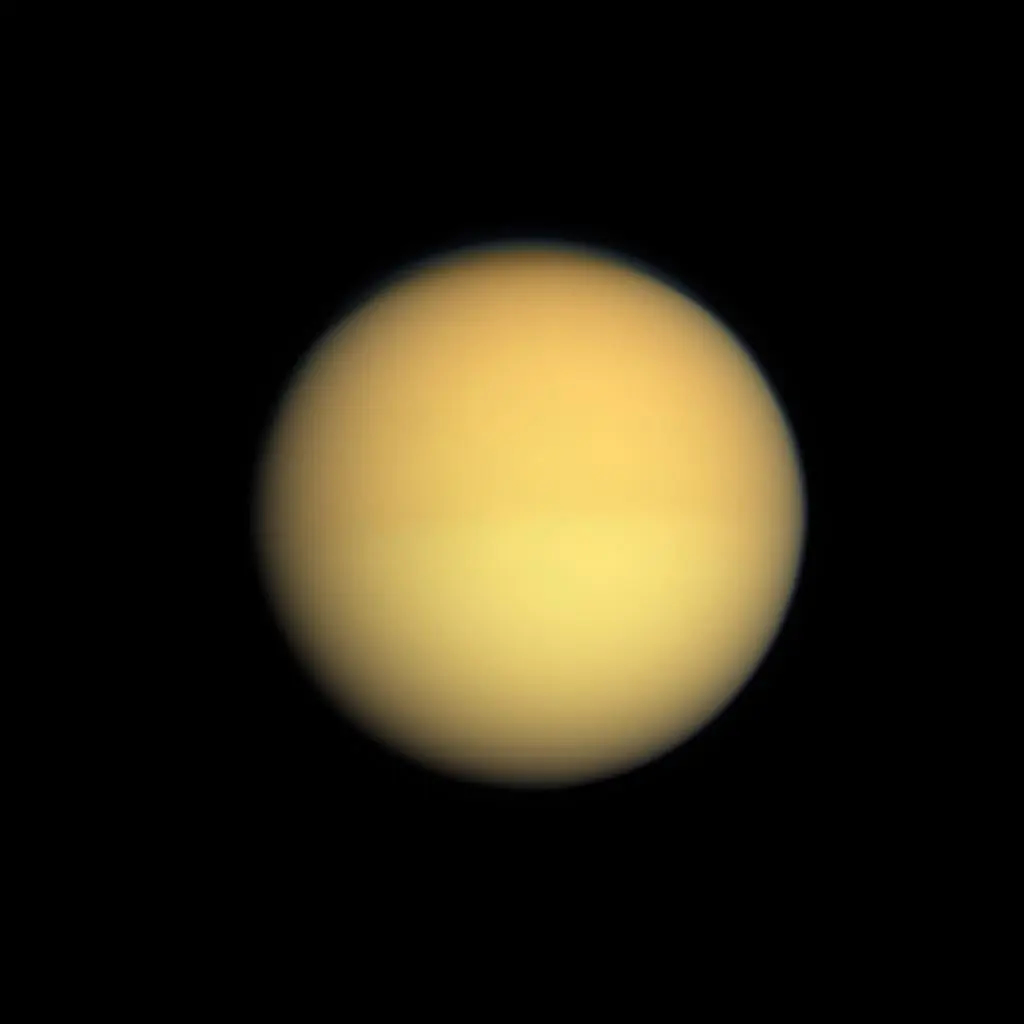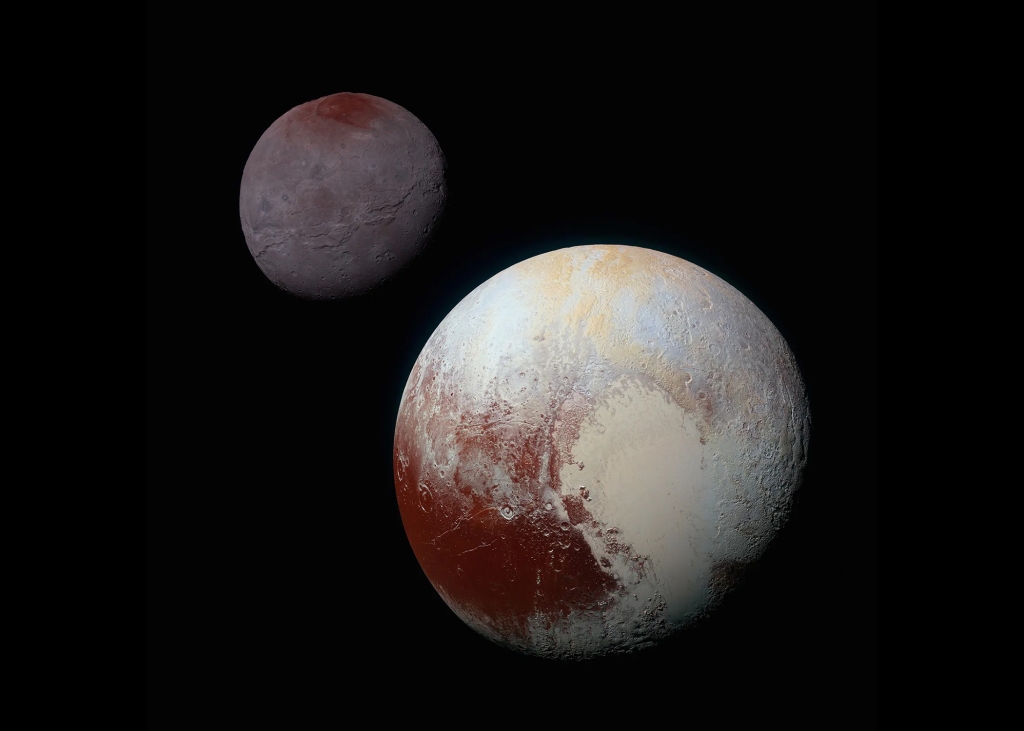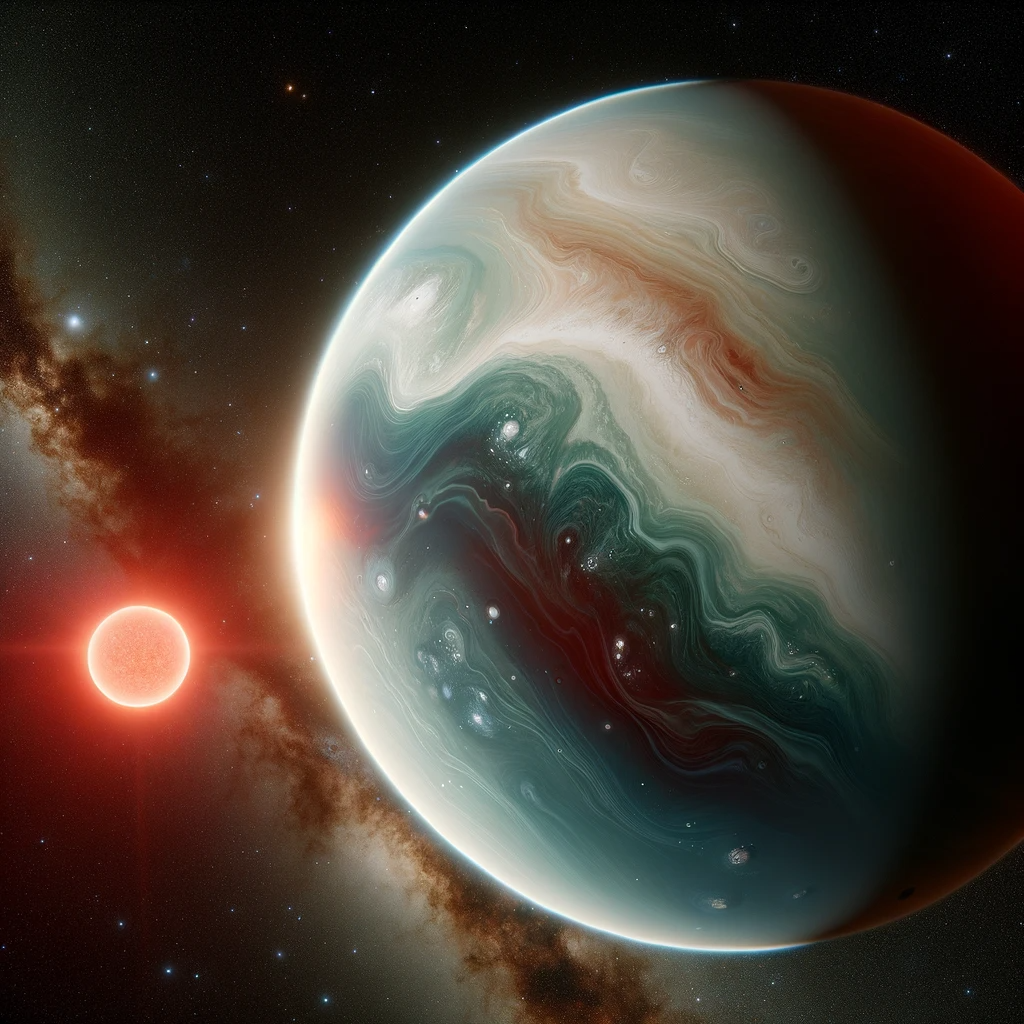A closer look at observations by the Cassini spacecraft has provided compelling evidence of a global ocean beneath the ice shell of Saturn’s moon Titan. The study suggests that Titan’s ice shell is not rigidly fixed but floats atop a vast, subsurface ocean. This observation substantially surpasses previous predictions, indicating a complex internal structure far different from a simple body of pure water resting on a solid foundation.

Researchers have revisited and refined our understanding of Titan’s internal ocean by considering its dynamic tidal response influenced by Saturn’s gravitational pull. The study introduces a nuanced perspective, highlighting the role of a stratified ocean, where salinity increases with depth, in resonating with Saturn’s eccentricity tides. This stratified model, incorporating the full spectrum of ocean dynamics and internal gravity waves, not only aligns with Cassini’s findings but also suggests a lower overall salinity for Titan’s ocean, more in line with Earth’s oceans and Enceladus’ plumes.
Titan, the largest moon of Saturn, stands out as a captivating world in our solar system, renowned for its complex and Earth-like features, yet distinctly alien in character. It is the second-largest moon in the solar system and the only one enveloped in a thick, nitrogen-rich atmosphere, veiling its surface from direct view. Titan’s surface is etched with vast dunes, river channels, and lakes, not of water but of liquid hydrocarbons like methane and ethane, making it the only other place in the solar system with stable liquids on its surface. This intriguing moon also harbors a hidden ocean beneath its icy crust, hinting at a complex interplay of geological and potentially biochemical processes. Titan’s unique environment, shaped by both familiar and foreign forces, makes it a prime target for scientific exploration and a window into the outer solar system’s dynamics and chemistry.

Scientists have a greater understanding of the mysterious dynamics of Titan’s subsurface ocean, the key to which lies in the phenomenon of resonantly excited internal gravity waves within the moon’s global ocean, which are thought to contribute significantly to Titan’s observed dynamic gravity.
However, the persistence of these resonant waves over geological timescales presents a puzzle. The solution hinges on the gradual freezing of Titan’s ocean due to its natural cooling process. This freezing alters the ocean’s stratification profile, thereby changing the frequency of the ocean waves. At a certain point during Titan’s thermal evolution, the frequency of these waves aligns with Titan’s orbital frequency, triggering a resonance.
Remarkably, once initiated, this tidal resonance could be maintained for extensive periods, akin to the tidal resonant locking observed in the interactions between Jupiter and Saturn and their moons. This sustained resonance could have far-reaching consequences, notably amplifying the tidal heating within Titan’s ocean. This additional heat input might slow down or even arrest the ocean’s freezing process.

This new understanding not only sheds light on the intricate interplay between Titan’s ocean dynamics and its thermal evolution but also enriches our broader knowledge of celestial mechanics and the fascinating internal processes of icy moons in our solar system.
This revelation reduces the need for previously hypothesized processes that would heavily salt Titan’s ocean, reshaping our understanding of the moon’s internal makeup. Moreover, this insight into Titan’s ocean dynamics contributes to a broader understanding of icy worlds in our solar system, underlining the importance of oceans in determining the habitability and the geological and biological processes of these distant, icy realms. The discovery opens new pathways for future in-situ space exploration, deepening our quest to unravel the mysteries of potential life beyond Earth.
Source
Idini, Benjamin, and Francis Nimmo. “Resonant Stratification in Titan’s Global Ocean.” The Planetary Science Journal, vol. 5, no. 1, 2024, p. 15, dx.doi.org/10.3847/PSJ/ad11ef, https://doi.org/10.3847/PSJ/ad11ef.
Featured Image
NASA/JPL-Caltech/Univ. Arizona/Univ. Idaho





